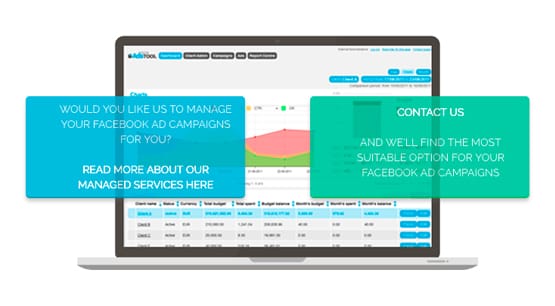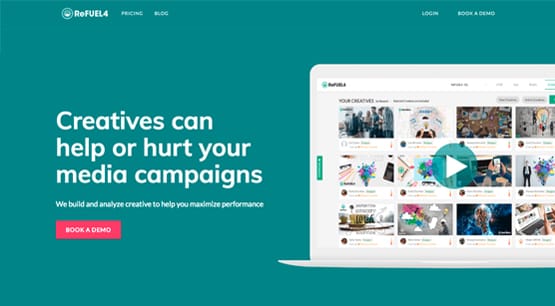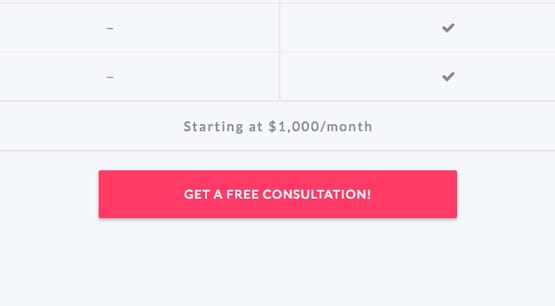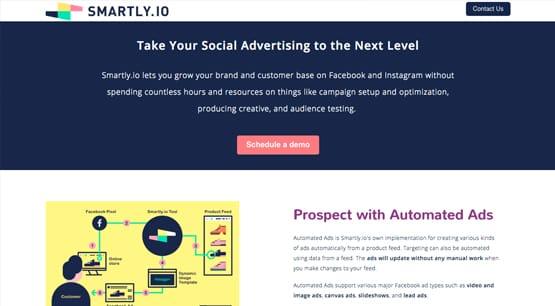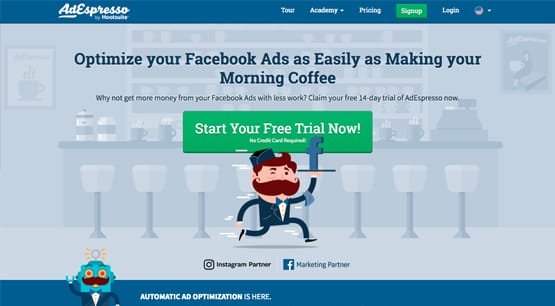5 Ways to Update Your Facebook Ads Automatically
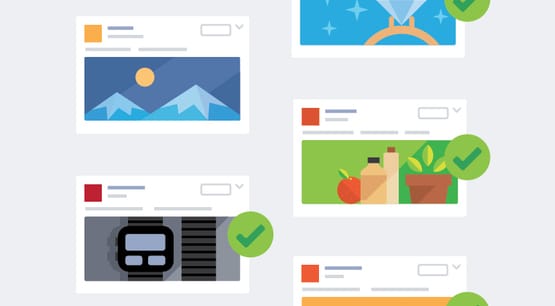
Facebook ads can be a great source of traffic and conversions. Alternatively, they can be a huge money sink with nothing to show for it. The difference is generally in how well you’re able to optimize, iterate, and improve on your ads.
Of course, there are a thousand different ways you can optimize your ads, and a million articles written about how to do so. Some of them are valid and useful, some of them are out of date, and a lot of them regurgitate the same sources over and over.
Even if you know what you’re doing, optimizing your Facebook ads is, quite frankly, a lot of work. As you might imagine on a site called Autolikes, I like to automate as much as possible. Sometimes that means skirting the line into gray hat SEO, sometimes it means developing my own email response system, and sometimes it just means using some third party app to do a lot of the tedious adjustments manually.
When it comes to optimizing Facebook ads, I fall firmly into the last one of those options. There are quite a few individual apps you can use to optimize your Facebook ads automatically. I’ll go over five of them, and then I’ll put the call out to you. If you know of one you like to use that I don’t mention here, tell me in the comments! I’m always looking for new ways to automate and improve, so I’ll give it a look.
1. Social Ads Tool by GotU
Social Ads Tool, or SAT as I’ll refer to it moving forward, is a tool aimed at being “your Facebook ads partner.” You outsource your campaigns to them, and they apply this tool to it.
They have a bunch of managed services as well, but this tool is powered by a proprietary technology to make incremental changes to your ads. What kinds of changes do they make?
- You can set a minimum level of performance for your ads. If your ads fall below that performance threshold, the system will automatically cut them off, pausing the campaign and letting you know they have failed to keep up their value.
- You can set a CPA goal or an ROI goal, and the system will automatically adjust your bids incrementally until you reach it, and then continually adjust bidding to keep you there as long as it’s feasible to do so.
- You can enable a setting that will automatically boost ads if those ads are not receiving impressions, allowing you to make sure everything at least gets a basic level of benchmarking performance.
- When running multiple campaigns under a single overarching budget, the tool will allow you to automatically adjust budgeting to bias the best performing campaigns. If a campaign changes, the budget will change accordingly.
- You can set goal thresholds of, for example, a certain number of clicks or conversions that satisfy you. The system can automatically pause a campaign that reaches the threshold, so it doesn’t outstay its welcome.
They can also schedule your ads to run only during specific peak hours, as determined by performance, dynamically adjusting their day-part scheduling for best results. You can even set it to automatically boost individual organic posts on your page, when those posts reach certain levels of value.
The downside to this “tool” is that it’s not strictly a tool. They use their automatic tools behind the scenes, but you can’t just start using them yourself, as far as I can see. You have to contract with them. On the plus side, their pricing model is fairly flexible. You can pay a cost per fan, a fixed cost per action, a percentage of your ad spend, or another tailored model for your goals.
In any case, I put this one first because it’s the weakest of the five I’ve mentioned. You can give it a shot, but it’s not guaranteed to perform the way the others I’m mentioning will.
2. ReFUEL4
ReFUEL4, which I’ll refer to as Refuel for ease of typing, is a simple tool that works very well at what it does, but it isn’t comprehensive. What do I mean by that? You’ll see.
First of all, Refuel works with Facebook, Instagram, Google, and Snapchat ads all at once, if you use them. Secondly, it does one specific thing. It doesn’t adjust your bidding or your targeting or any of that. All it does is refresh your ad creatives based on AI monitoring.
Alright… what does that mean? There’s a problem with online advertising called ad fatigue. Ad fatigue is when you see a specific ad so often you start to ignore it, stop caring about it, or even start to develop a negative impression of it. Have you ever seen one particular TV commercial so many times that you scramble to mute the TV when it comes on, just because it irritates you? That’s ad fatigue.
When your ads start to become subject to ad fatigue, they start to perform worse and worse. Fewer people click on them, fewer people convert by them, and more people start to report them as spam.
Refuel is an app built to solve this one specific problem. They monitor your ad performance, and use their own proprietary AI to predict when your campaign is reaching saturation point. Once that saturation point is reached, performance will drop due to ad fatigue, and normally you would be forced to address the problem yourself.
The real benefit of Refuel is not actually in the predictive AI. A lot of different apps can tell you that performance is dropping and you should refresh your ad. Refuel is one of the only apps that does it for you. They have a network of freelance writers and graphic designers who automatically create new copy or images for your ads, as soon as the AI determines you need them. That new ad copy goes up almost immediately, and you don’t have to do a thing.
This sounds awesome, and it is. The problem is the price. Refuel’s “lite” pack, which doesn’t get you unlimited ad accounts or a dedicated account manager, starts at $1,000 per month. That’s an incredibly steep price for smaller businesses, but if you can afford it, it can be well worth it.
3. Zalster
Zalster is an app that is attempting to use a machine learning AI to replace human actions for ad optimization. They monitor your Facebook and Instagram ads as they run, and will make incremental adjustments to increase their performance on a daily or even hourly basis. What do they adjust?
Zalster’s AI will adjust your bidding, your budget allocations, your ad targeting, and even your ad creatives, within certain constraints. You don’t have to worry about ending up with ads going full on overly-specific-shirt, though; there’s enough human overview, and you can correct course at any time, to avoid it.
The app provides a lot of split testing options with manual bidding, with conversions as your target event. Split testing different ads using incremental adjustments from Zalster helps you figure out what direction to take your marketing.
The primary downside of this particular automation app is the price, as it so often seems to be. Zalster has a free bot, but all it does is report on your ad performance on Slack. It’s just a strange way to get analytics updates more than anything else. They have a “full bot” as well, which is $95 per month for each ad account you want it to monitor. It, however, isn’t an automatic optimizer. It makes predictions of your ad performance and gives you recommendations on how to change, but you still have to decide on the specific changes and implement them yourself.
The full platform for Zalster includes the Slack reporting and the predictions/suggestions of the previous levels, but it has other features too. It has a dashboard you can customize, it has full support and a dedicated manager to watch over it, and most importantly it has the automatic optimization bot.
Of course, this platform doesn’t come cheap. It will cost you 5% of your total ad spend, with a minimum of $595 per month. It’s pretty good for when you have a high budget to tear through and want to maximize every penny, but it’s overpriced when you have a small budget such that $600 per month is extreme.
4. Smartly.io
Smartly is another tool aimed at Facebook and Instagram advertising. It makes sense, of course, since both platforms run on the same ads system. Smartly is aimed at slightly smaller businesses than the other tools on the list, though it doesn’t really do anything as innovative. It’s made up of several components.
First up, Smartly has ad prospecting with their Automated Ads system. This system creates various ads automatically based on a product feed. You essentially link it to your storefront and it will experiment with making ads based on your products, prioritizing new products you add to your shop – the ones you most likely want to advertise. When you make changes to your product feed, the ads change accordingly.
The second component is budget optimization. Smartly has a Smart Predictive Budget system that is backed by ad managers and data generalized from their whole customer base. You choose a goal, and Smartly will start to optimize your ads to reach that goal. You can make a budget pool to be allocated between different campaigns and ad sets, while still keeping a budget cap so you’re never hit with a runaway expense. They also use data from various analytics sources, including your site Google Analytics, to make sure they optimize appropriately.
Split testing is included as well. The engine will divide your audience and split test ads between them, to determine which set works best and iterate from there. It’s all the same work you would be doing, but with their engine behind it.
Pricing for this app starts at 5% of your total ad spend, but the larger your ad spend, the smaller the percentage. If you’re in the business of spending half a million a month – and if you are, call me – you’re only charged 3%. The minimum is, unfortunately, $1,000 per month, just like Refuel.
5. AdEspresso
Saving the best for last, AdEspresso is probably the number one app you thought of when I mentioned Facebook ads at the start. They’re one of the most graphically well branded and one of the most prominent Facebook ads companies on the internet today.
AdEspresso uses their own rules engine and allows you to create automatic optimization rules. These rules allow you to set things like a frequency cap, to prevent ad fatigue. They also allow you to set performance goals like a target CPA, a target level of ROI, and really everything else that has been mentioned above as one of the other automatic adjustments. You can dynamically enable and disable individual elements of the adjustment rules as you go.
AdEspresso has one major benefit over the other apps; rather than being some obtuse and proprietary “AI” running the changes, they’re definable rules you can set, with specific actions assigned to each rule. If you want to maximize your CPA, for example, you know that the bot is going to be adjusting your bid incrementally until it finds the sweet spot between ROI and CPA.
It’s not just a set of ill-defined rules, either. They have a full guide to creating your own optimization rules. It’s basically like programming, and it’s frankly more complicated than just monitoring and adjusting your ads alone, but it pays off in the long run. Like a lot of good automation, it may be more work to front-load the system, but once it’s up and running, it can go without needing more than minor adjustments for a long time.
AdEspresso will cost you $49 per month, though the pricing does depend on your ad spend. That price only works for budgets of up to $3,000 per month. You can view their pricing page for the full breakdown of features, of course.
Over to you now; do you have an automatic optimization app you prefer? If so, let me know. I’d love to check it out.




